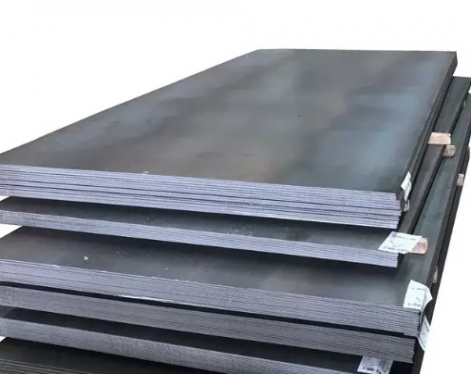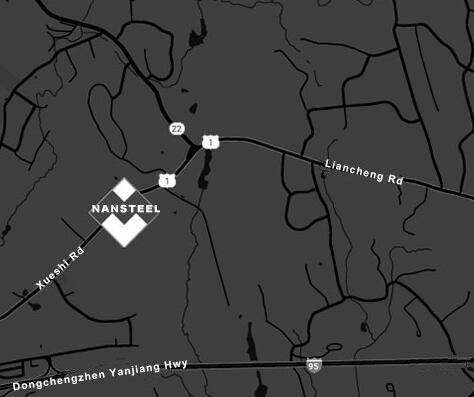Carbon steel plates, with their outstanding strength and workability, are widely used in industrial manufacturing, construction, and other fields. From towering skyscrapers to everyday metal products, carbon steel plates are indispensable. Among the many factors that influence the performance and application of carbon steel plates, thickness is a key indicator.
The thickness range of carbon steel plates is quite wide, with common thicknesses ranging from 0.5mm to 300mm. This range meets the diverse needs in different scenarios.
Uses of carbon steel plates of different thicknesses
In the machinery manufacturing industry, it is also indispensable. It can be used to manufacture mechanical casings, bases and other components, providing a solid "protective shell" and stable support for mechanical equipment. Its good processing performance allows it to adapt to various mechanical processing processes and meet the manufacturing needs of different mechanical products.

Factors affecting the selection of carbon steel plate thickness
1. Material properties
Carbon steel plate properties like strength and toughness depend on carbon content: low-carbon steel has good toughness and formability, so thinner plates work for low-strength, high-plasticity needs; high-carbon steel is hard and wear-resistant but less tough, so thicker plates may be needed for impact-prone uses to make up for poor toughness.
2. Application scenario
Different uses need different carbon steel plate thicknesses: construction uses thicker plates for load-bearing structures (beams, columns) to bear weight and ensure safety; automakers use thin, high-strength plates for lightweighting and energy saving while keeping body strength; aerospace uses meticulously calculated thin plates to meet high strength, lightweight and extreme environment resistance.
3. Load requirements
If carbon steel plates need to bear heavy objects or work in harsh environments, such as the base of large machinery or the structural parts of offshore platforms, thicker plates must be selected to prevent deformation and cracking under heavy pressure or complex stress; for some low-load applications, such as ordinary decorative frames and small brackets, thin plates can meet the needs and save materials and costs.
4. Processing technology
The processing technology also restricts the thickness of carbon steel plates. Laser cutting is suitable for cutting medium-thin plates, but it is difficult and costly to cut thicker plates. Stamping can easily form complex shapes on thin plates, but stamping thick plates requires greater punching force and more advanced equipment, and may even be impossible. Therefore, the thickness selection should consider the compatibility of the processing technology.
5. Economic factors
Plate cost is positively correlated with thickness, with costs increasing significantly with increasing thickness. In projects, it's important to comprehensively consider cost factors and balance the selection of carbon steel plate thicknesses, while still meeting functional and performance requirements. Find the most cost-effective solution and avoid unnecessary cost increases due to excessive thickness.
Read more: Carbon Steel Plate Specification
The thickness range of carbon steel plates is quite wide, with common thicknesses ranging from 0.5mm to 300mm. This range meets the diverse needs in different scenarios.
Uses of carbon steel plates of different thicknesses
1. Thin plates (0.5mm - 4mm)
Carbon steel sheets in this range, with thicknesses ranging from 0.5mm to 4mm, are like a nimble dancer, graceful and graceful. They are particularly useful in electronic products such as computer cases and mobile phone casings. Their thinness and lightness ensure both strength and portability.2. Medium and thick plates (4mm - 20mm)
Medium and heavy plates, ranging in thickness from 4mm to 20mm, are the backbone of the construction industry. In high-rise construction, they are used to create structural components such as beams and columns, supporting the building's framework. Their reliable strength and stability ensure the building's safety in all weather conditions.In the machinery manufacturing industry, it is also indispensable. It can be used to manufacture mechanical casings, bases and other components, providing a solid "protective shell" and stable support for mechanical equipment. Its good processing performance allows it to adapt to various mechanical processing processes and meet the manufacturing needs of different mechanical products.
3. Thick plate (above 20mm)
Thick plates, exceeding 20mm in thickness, are considered the "strongmen" of the industrial sector. In the manufacture of large-scale machinery and equipment, such as large mining machinery and heavy machine tools, thick plates, with their high load-bearing capacity, can withstand tremendous pressure and impact, ensuring stable operation in harsh working conditions.
Factors affecting the selection of carbon steel plate thickness
1. Material properties
Carbon steel plate properties like strength and toughness depend on carbon content: low-carbon steel has good toughness and formability, so thinner plates work for low-strength, high-plasticity needs; high-carbon steel is hard and wear-resistant but less tough, so thicker plates may be needed for impact-prone uses to make up for poor toughness.
2. Application scenario
Different uses need different carbon steel plate thicknesses: construction uses thicker plates for load-bearing structures (beams, columns) to bear weight and ensure safety; automakers use thin, high-strength plates for lightweighting and energy saving while keeping body strength; aerospace uses meticulously calculated thin plates to meet high strength, lightweight and extreme environment resistance.
3. Load requirements
If carbon steel plates need to bear heavy objects or work in harsh environments, such as the base of large machinery or the structural parts of offshore platforms, thicker plates must be selected to prevent deformation and cracking under heavy pressure or complex stress; for some low-load applications, such as ordinary decorative frames and small brackets, thin plates can meet the needs and save materials and costs.
4. Processing technology
The processing technology also restricts the thickness of carbon steel plates. Laser cutting is suitable for cutting medium-thin plates, but it is difficult and costly to cut thicker plates. Stamping can easily form complex shapes on thin plates, but stamping thick plates requires greater punching force and more advanced equipment, and may even be impossible. Therefore, the thickness selection should consider the compatibility of the processing technology.
5. Economic factors
Plate cost is positively correlated with thickness, with costs increasing significantly with increasing thickness. In projects, it's important to comprehensively consider cost factors and balance the selection of carbon steel plate thicknesses, while still meeting functional and performance requirements. Find the most cost-effective solution and avoid unnecessary cost increases due to excessive thickness.
Read more: Carbon Steel Plate Specification
Next:Types of OCTG Pipe









